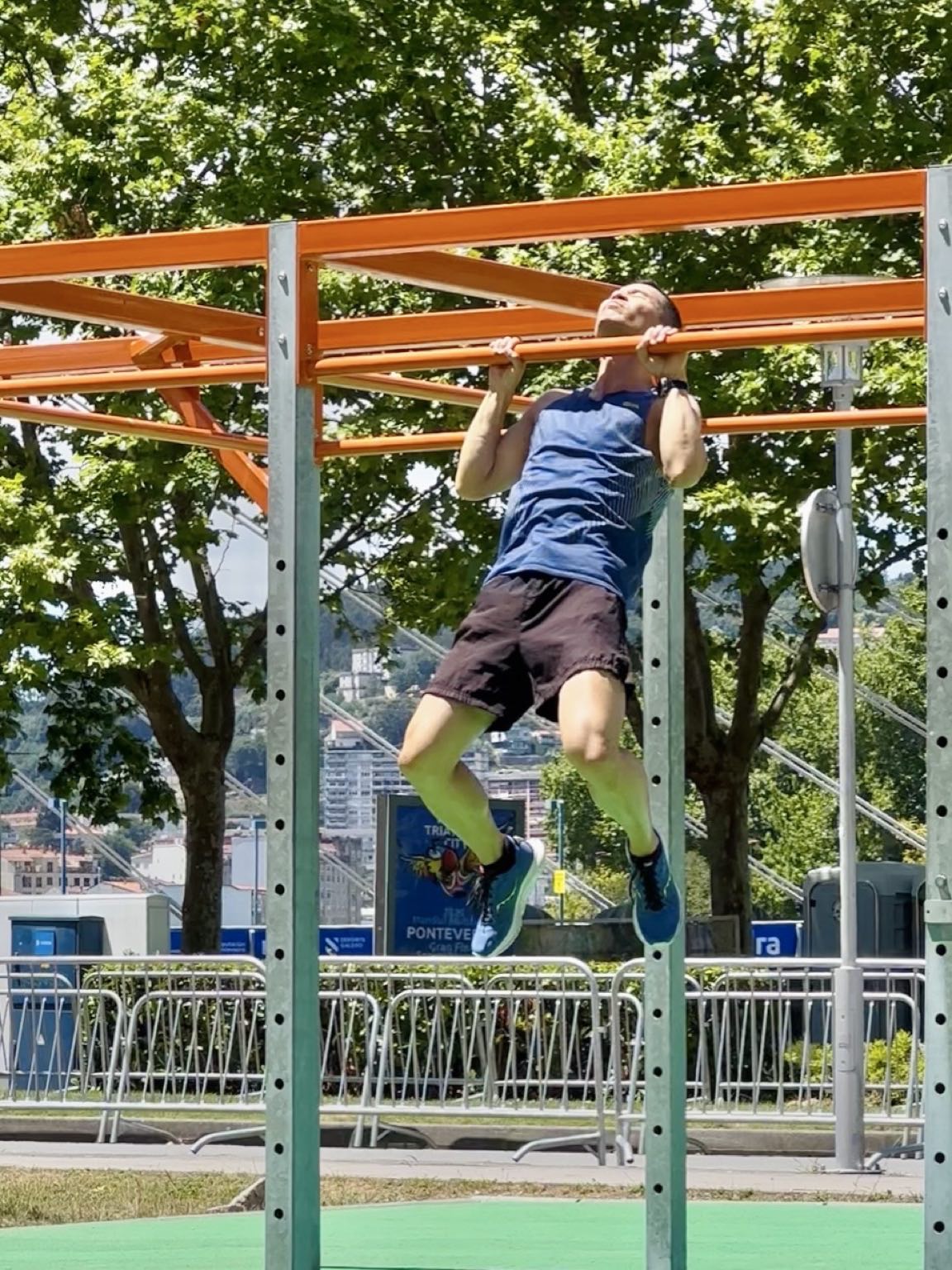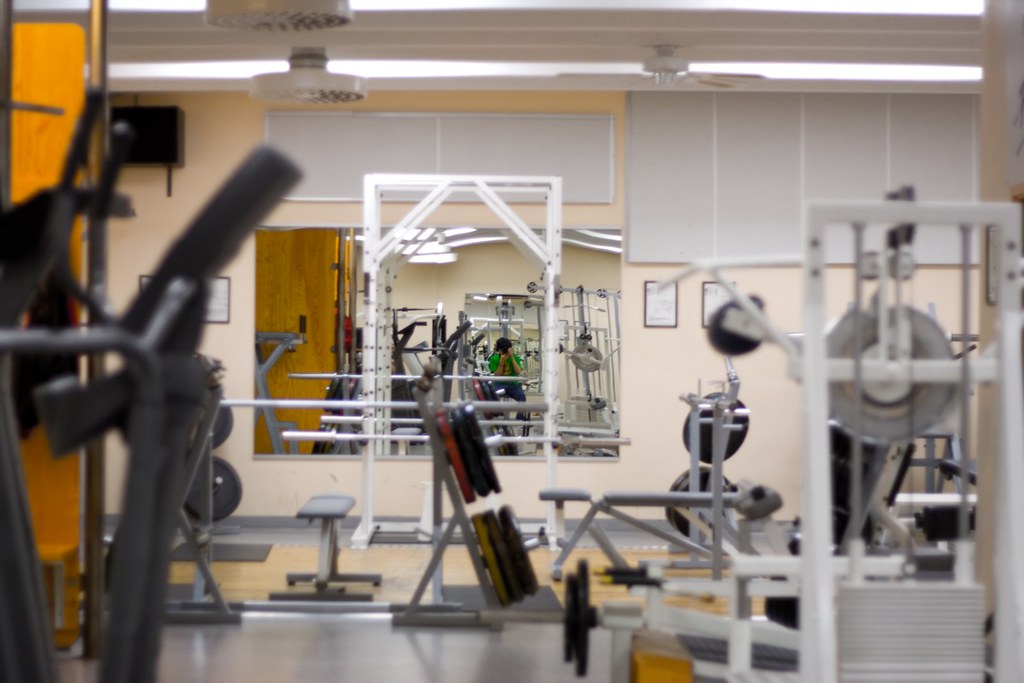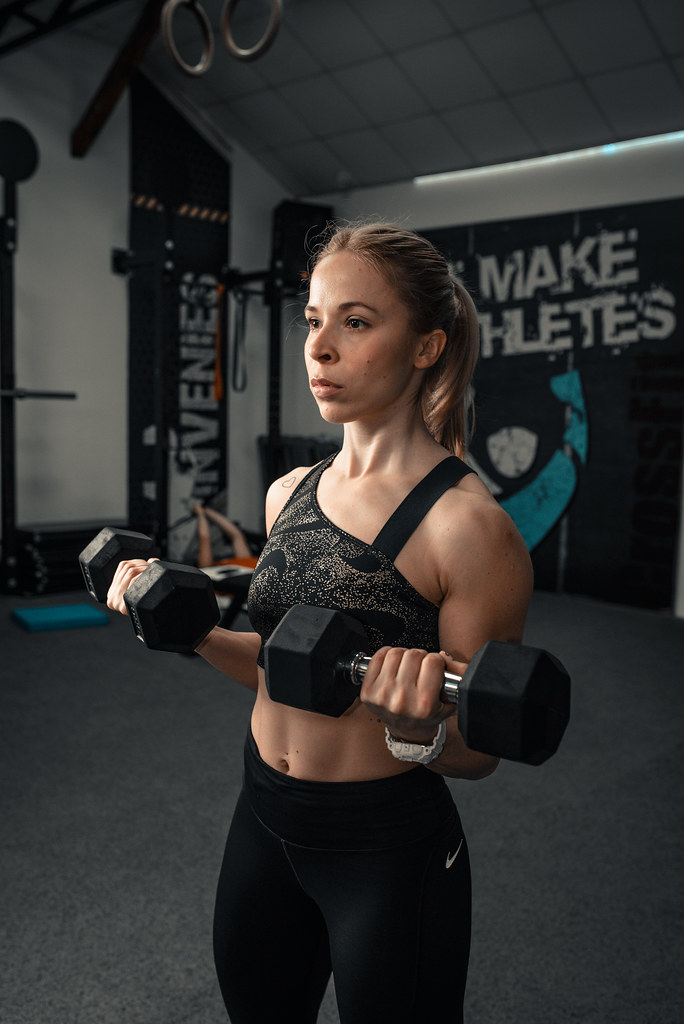
The journey into your 50s ushers in a new era of physical challenges that are as inevitable as they are impactful. As men reach this significant milestone, they often notice a natural decline in muscle mass, a slowing metabolism, reduced joint flexibility, and a decrease in testosterone levels. These physiological shifts can manifest in various ways, influencing everything from daily energy reserves to the ease with which you perform everyday tasks.
Yet, here’s the truly empowering message: age is not a barrier to building a stronger, more capable body. With a thoughtfully designed exercise regimen, men over 50 possess the remarkable capacity to build impressive strength, significantly enhance their mobility, and ultimately, elevate their overall quality of life. The secret lies in a smart approach—selecting movements that respectfully cater to your body’s evolving needs while still offering a substantial and beneficial challenge.
Leading fitness professionals emphasize this tailored approach. Nico Gonzalez, a Balanced Body Educator and Global Movement Trainer & Educator, certified through ACE for Personal Training and NCPT for Pilates, states, “Functional movement becomes critical as we age. The best advice I can give men over 50 years of age is to stay mobile and continue strength training multiple times a week. Like a car, we want to warm up the body thoroughly the older it gets.” Echoing this sentiment, Tyler Read, Certified personal trainer and founder of PTPioneer, highlights that “A well-rounded fitness routine after 50 should focus on building strength, maintaining flexibility, enhancing balance, and supporting joint health—all while minimizing injury risk.” He wisely cautions, “As with any new exercise routine, it’s always a smart idea to check in with a certified fitness or medical professional to see what movements receive the green light for you to safely perform at your age and stage of life. Exercising should not be a painful experience, so if you ever experience any sort of pain, you should immediately stop and reevaluate again with a professional.” This foundation of safety and informed choice is paramount as we dive into exercises that promise to reshape your fitness journey.
1. **Flat Back Bridge**The Flat Back Bridge is an exceptional exercise that serves as a cornerstone for building foundational strength and stability, particularly beneficial for men navigating the physiological shifts of aging. As Nico Gonzalez points out, this movement “targets the glutes, hamstrings, and core while promoting spinal stability.” These are critical areas that often weaken with age, leading to issues like lower back pain and decreased functional movement. By engaging these muscle groups, you’re not just strengthening your posterior chain; you’re also laying the groundwork for improved posture and resilience against everyday strains.
To execute this powerful exercise, begin by lying on your back on a mat, bending your knees with your feet flat on the floor, positioned hip-width apart. Allow your arms to rest comfortably alongside your body, palms facing down. Crucially, ensure your spine maintains a neutral position, meaning you should feel a natural, gentle curve in your lower back while still maintaining contact with the mat. Before initiating the lift, actively engage your abdominal muscles by drawing your navel towards your spine – this internal bracing is key for protecting your lower back and maximizing core involvement.
With your core engaged, inhale to prepare, and as you exhale, press firmly through your feet, lifting your hips purposefully towards the ceiling. The goal is to achieve a straight line extending from your shoulders through your hips to your knees at the peak of the bridge. During this ascent, consciously focus on keeping your back flat rather than allowing it to arch excessively, and maintain a neutral pelvis by drawing your ribs in. Finally, inhale as you meticulously lower your hips back to the mat, aiming to articulate your spine down one vertebra at a time. This controlled descent not only builds strength but also enhances body awareness and spinal mobility, crucial elements for sustained physical health beyond 50.
Read more about: Hollywood’s Cold War: 14 Major Actors Who Flat-Out Refused to Work Together Again
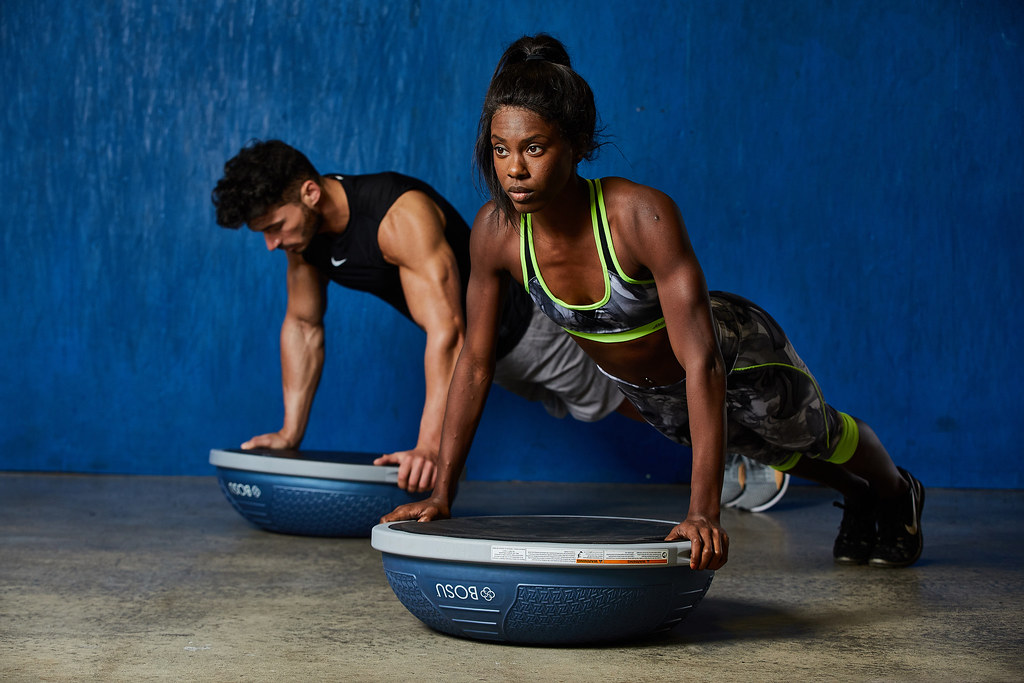
2. **BOSU Dead Bug to Stand**The BOSU Dead Bug to Stand is a dynamic and comprehensive exercise highly recommended by Nico Gonzalez for its profound impact on core stability and coordination, two attributes that become increasingly vital as men age. This exercise masterfully combines a sophisticated core movement with a functional stand-up, addressing multiple facets of fitness crucial for maintaining an active and independent lifestyle. It challenges your balance in an unstable environment, forcing your deep core muscles to work harder to stabilize your spine, thereby enhancing overall body control and preventing compensatory movements that could lead to injury.
To begin, position the BOSU balance trainer with its flat side firmly on the floor. Carefully lie on your back, ensuring your shoulders and head are comfortably supported by the dome of the BOSU. Your feet should be flat on the ground, hip-width apart, providing a stable base. Bring your legs up so your knees are bent at a precise 90-degree angle, with your thighs perpendicular to the floor and your shins parallel to the ground. Extend your arms straight up towards the ceiling, maintaining locked elbows throughout. Before any movement, tighten your abdominal muscles with intention to stabilize your spine, actively preventing your lower back from arching away from the BOSU.
Now, the intricate part: slowly lower your right arm and left leg simultaneously towards the floor. It’s essential to keep your lower back pressed firmly against the BOSU throughout this controlled extension. Return both limbs to the starting position with equal control. Then, repeat the movement on the opposite side, lowering your left arm and right leg. After completing repetitions on both sides, rock your body forward into a deep squat position, then powerfully stand up. To restart, squat down and rock back onto your low back to return to the initial BOSU Dead Bug position. Gonzalez enthusiastically notes, “What I love about this exercise is that I categorize it as a full body movement. The stand to squat phase focused on hamstrings, gluteals, and quadriceps. The balancing portion fires the rectus abdominals, internal/external obliques and the traverse abdominals.” This makes it an incredibly efficient and effective exercise for comprehensive conditioning.

3. **Core Leg Lifts Side to Side**Nico Gonzalez highly recommends Core Leg Lifts Side to Side as an advanced core exercise that not only sculpts the abdominal muscles but also significantly enhances hip flexor strength and upper body support. For men over 50, this exercise is particularly beneficial because it challenges the entire abdominal wall in a dynamic, rotational manner, which is crucial for maintaining spinal health and functional movement in daily life. Strong core muscles are paramount for everything from good posture to safely lifting objects, and this movement directly addresses these needs while demanding significant control.
To perform this challenging yet rewarding exercise, begin by seating yourself on the floor, leaning back slightly with your hands placed on the floor behind you for sturdy support. Your hands should be positioned to help you balance and maintain a stable upper body throughout the movement. Next, engage your core muscles and lift both of your legs straight up as high as you can comfortably hold them, ensuring they remain together. This initial leg lift already activates the lower abdominals and hip flexors, setting the stage for the dynamic phase of the exercise.
With your legs lifted and your core taut, slowly lower both legs together over to your right side, controlling the descent without letting them touch the floor. Then, with deliberate effort, lift them back to the center position. Immediately after, lower both legs together over to your left side, again maintaining control. The key throughout this exercise is to concentrate intently on maintaining a steady and unmoving upper body as your hips and legs execute their controlled, sweeping movements. Aim to perform 10 repetitions on each side. Gonzalez underscores the rigor of this exercise, stating, “This is a tough exercise as you are supporting yourself with the upper body as you move the lower body. It engages triceps, deltoids, hip flexors and all the ab muscles including rectus abdominals, internal/external obliques and the traverse abdominals.” This comprehensive engagement makes it a powerhouse for strength and stability.
Read more about: Unlocking Peak Performance: A Deep Dive into Mark Wahlberg’s Ultimate Home Gym & How You Can Build Your Own Fitness Sanctuary
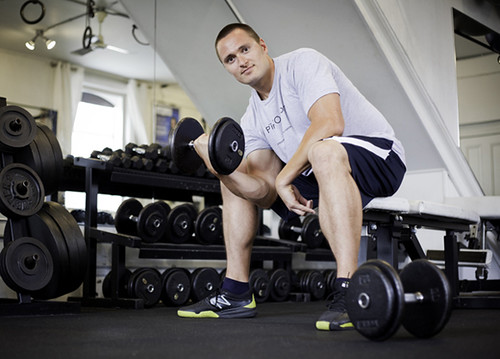
4. **Twisted Knee Hovers**The Twisted Knee Hovers exercise, as outlined by Nico Gonzalez, is an exceptional full-body movement that hones core strength, balance, and coordination, all while being remarkably gentle on the joints. For men over 50, exercises that involve getting down to the floor and incorporating hovering elements are especially valuable, as they build strength and control in postures that mimic real-life functional movements, improving overall stability and reducing fall risk. This particular variation adds a rotational component, targeting the oblique muscles more intensely and enhancing spinal mobility.
To begin, position yourself on the floor in a kneeling stance, ensuring your hands are directly beneath your chest and your knees are aligned beneath your hips. This provides a stable and proper starting posture. Focus on maintaining a neutral position in your back throughout the exercise, avoiding any rounding or excessive arching, which is crucial for spinal health. Now, with your core engaged, gently hover your knees just off the floor, barely an inch or two, transferring your weight to your hands and the balls of your feet. This hovering action immediately activates a multitude of muscles, from your shoulders to your core and legs, preparing your body for the twist.
Once in the hover position, initiate the twist: rotate your hips and knees to the right side, keeping them elevated off the floor. Return smoothly to the center, then immediately twist your hips and knees to the left side, bringing them back to the center again. This controlled twisting motion engages your obliques and deep core stabilizers. For those seeking an extra challenge and an enhanced balance component, Gonzalez suggests a bonus: as you twist, lift one arm towards the ceiling. This forces your core and supporting limbs to work even harder to maintain equilibrium. Perform 10 repetitions on each side. Gonzalez enthuses, “Any exercise that involves getting on the floor and hovering is amazing for the full body, engaging pectorals, deltoids, serratus along with the abs, rectus abdominals, internal/external obliques and the traverse abdominals.” This comprehensive muscle activation makes it a cornerstone for functional fitness.

5. **Goblet Squats**Goblet squats stand out as a highly effective and safe lower body exercise suitable for men of all fitness levels, especially those over 50. Andrew Tracey, Men’s Health fitness editor, highlights their primary advantage: “When performed correctly, goblet squats are a safe and effective option for all levels as they help encourage an upright torso when squatting.” This is a critical benefit for older individuals, as maintaining an upright posture minimizes stress on the lower back, a common area of concern, and promotes better overall biomechanics during the squatting movement. Unlike traditional barbell squats, the goblet squat naturally counterbalances your weight, making it easier to achieve depth and maintain form.
To perform a goblet squat, begin by standing with your legs positioned slightly wider than your shoulders. If you are using a weight, hold a dumbbell or kettlebell vertically against your chest, cupping the top end with both hands. Tightening your core deliberately, initiate the movement by sticking your backside out as if you’re about to sit down, simultaneously bending your knees. Lower yourself into the squat until your thighs are approximately parallel to the ground, ensuring your knees track directly over your feet and do not cave inward. Visualize yourself sitting back onto a box or chair rather than simply ‘dropping’ straight down, which helps maintain proper form and prevents your torso from falling forward, a common mistake Tyler Read also cautions against in his general squat advice.
As you reach the bottom of the movement, continue to look straight ahead, maintaining an upright torso, and pause briefly for a second to ensure stability and control. This pause reinforces proper depth and engagement. To return to the starting position, powerfully drive back up through your heels, actively squeezing your glutes and thrusting your hips forward until you are standing tall. For beginners, Tracey recommends starting with bodyweight squats onto a box or chair to master the movement pattern. As confidence and strength blossom, progressively add a light weight and then advance to squatting without the box, gradually increasing the challenge. This systematic progression ensures safety and continuous improvement, making the goblet squat an indispensable exercise for maintaining lower body strength and mobility.
Read more about: Unlock Your Strength: 10 Essential Training Moves for a Fitter You Over 50

6. **Pull-ups**Pull-ups are a paramount upper body exercise that Tyler Read emphatically recommends for maintaining strength and preserving range of motion in the shoulders, both of which are critical for men over 50. “Keeping your upper body strong and maintaining the range of motion in your shoulders is vital for overall fitness and day-to-day strength,” Read explains. As we age, muscle mass and joint mobility can diminish, making tasks like reaching overhead or carrying heavy objects more challenging. Pull-ups directly counteract this decline, building significant strength in the back, shoulders, and arms, which translates into enhanced functional capacity and a reduced risk of injury in everyday activities.
To effectively incorporate pull-ups into your routine, the first step is to choose a grip that is appropriate for your current strength and comfort level. You can opt for an overhand grip, where your palms face away from you, a neutral grip, which typically uses parallel bars allowing palms to face each other, or a reverse grip (chin-up style), where your palms face towards you. Each grip variation targets slightly different muscle groups, but all provide immense benefits for upper body development. Begin by hanging from the bar with your chosen grip, ensuring your arms are fully extended and your shoulders are relaxed, not shrugged up to your ears.
Now, initiate the movement by engaging your back and arm muscles, pulling your body upwards towards the bar. Aim to pull until your chin clears the bar, focusing on a controlled and deliberate motion. Once at the top, slowly and with control, lower yourself back to the starting position, allowing your arms to fully extend. This eccentric (lowering) phase is just as important as the concentric (pulling) phase for building strength. If performing full bodyweight pull-ups is currently beyond your capacity, Read suggests a valuable modification: negative pull-ups. To do these, jump to the top of the bar, then slowly lower yourself down, controlling the descent for as long as possible. This builds the requisite strength for eventual full pull-ups, allowing men over 50 to progressively work towards mastering this foundational upper body exercise.
Read more about: Beyond the Hype: Fitness Trainers Reveal the Secrets to Mark Wahlberg’s Redefined 2025 Workout Schedule
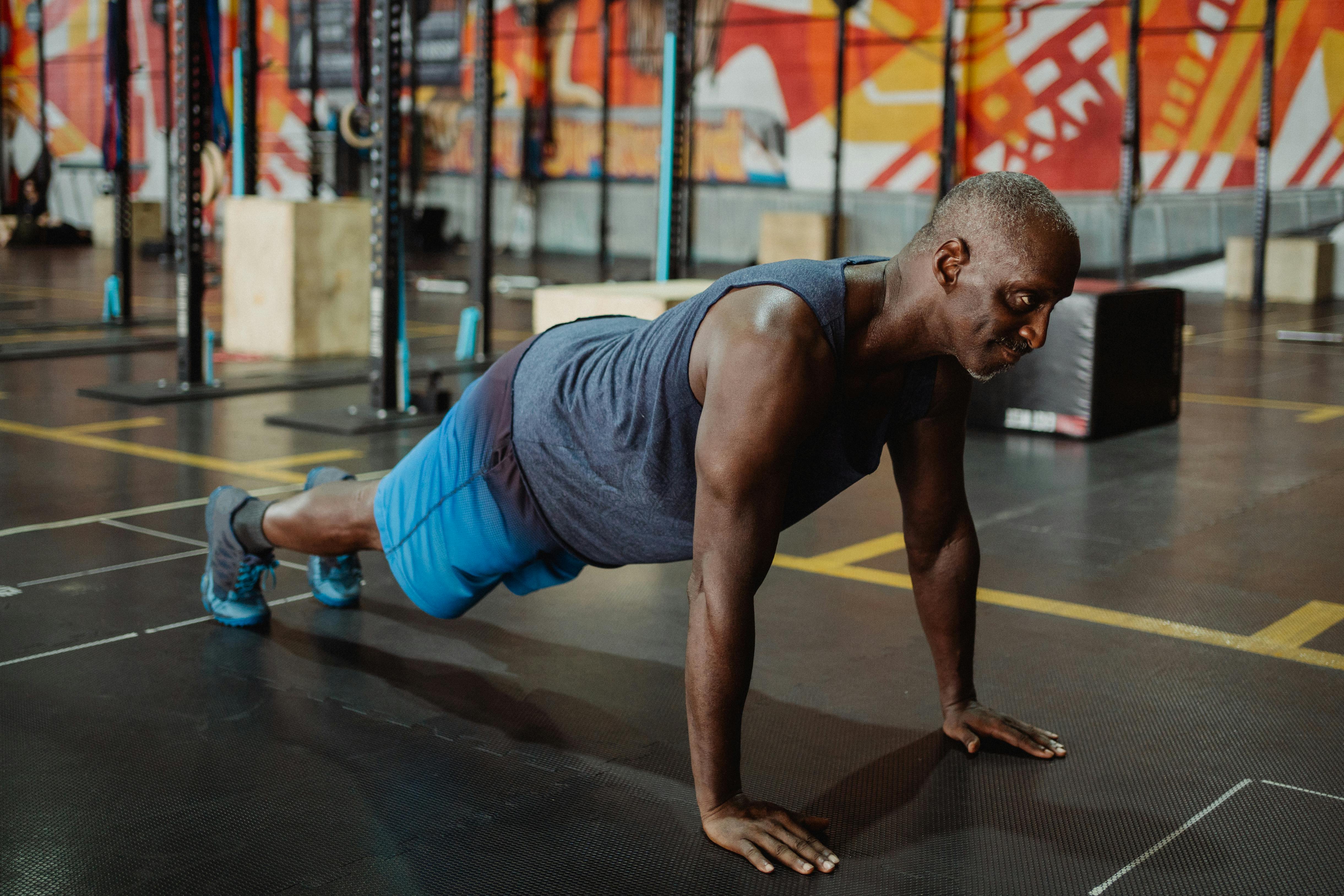
7. **Pushups**Pushups are a truly versatile and fundamental exercise, offering a potent combination of benefits for men over 50, making them an indispensable component of any well-rounded fitness regimen. Tyler Read, a certified personal trainer, emphasizes their immense value, noting they work your chest and shoulder muscles in a coordinated and highly functional way. This holistic engagement means you’re not just building isolated strength; you’re developing the kind of integrated power and stability that directly supports daily activities, from effortlessly pushing open a stubborn door to confidently lifting objects off the ground, ensuring you maintain physical independence.
Beyond their obvious upper body strengthening capabilities, pushups deliver an often-overlooked yet incredibly significant advantage: robust core training. Read highlights that the inherent core stability required to prevent your hips from sagging towards the ground during a pushup provides substantial abdominal engagement. This simultaneous strengthening of your pectorals, deltoids, and deep core muscles makes pushups an exceptionally efficient movement, delivering a comprehensive upper body and core challenge that directly addresses the needs of aging bodies by significantly improving both raw strength and systemic stability.
One of the greatest aspects of pushups is their remarkable adaptability, allowing you to precisely tailor the difficulty to your current fitness level and progression. If you’re just starting out or need to reduce the intensity and joint stress, Read wisely suggests elevating your hands by placing them on a sturdy surface, such as a bench or wall. Conversely, to progressively increase the challenge and truly ignite those muscle fibers, you can elevate your feet on a box or chair, or move your hands closer together, each modification demanding greater strength and refined control. This scalable progression ensures that pushups remain a continually beneficial and engaging exercise, evolving seamlessly with your fitness journey.
Read more about: Unlock Your Best Self: Essential Health and Fitness Pillars for Your 40s
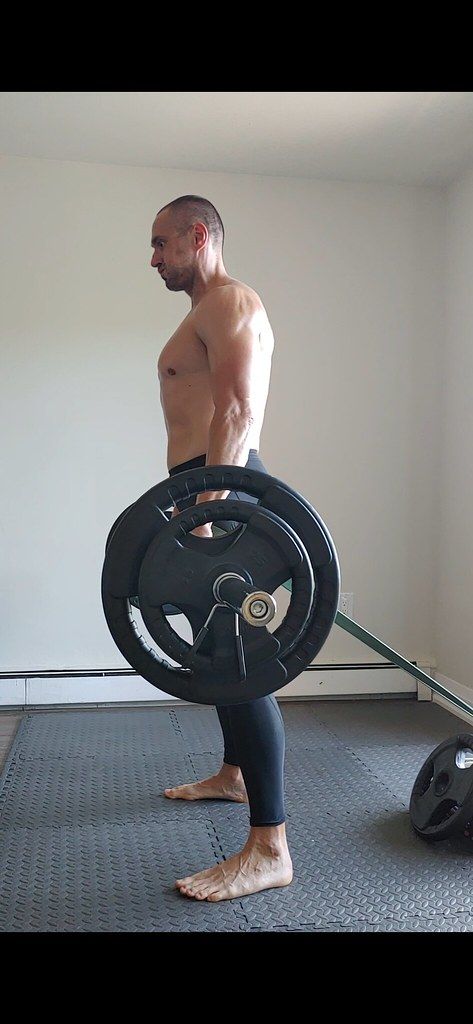
8. **Deadlift**When it comes to foundational strength, some variation of a deadlift is an absolute must for men aiming to stay fit, powerful, and injury-resistant as they navigate their golden years. Tyler Read unequivocally states, “Some variation of a deadlift is a must when it comes to staying fit.” This compound exercise is unparalleled for developing comprehensive posterior chain strength, dynamically targeting your glutes, hamstrings, and the critical muscles of your lower back. These are all crucial muscle groups for maintaining mobility, preventing debilitating lower back pain, and supporting a robust, upright physique throughout your later years, safeguarding against age-related decline.
The beauty of the deadlift also lies in its inherent flexibility, allowing you to meticulously choose a variation that best suits your body, existing mobility, and current strength level. Read specifically mentions popular and highly effective options such as the traditional standard barbell deadlifts and the hamstring-focused Romanian deadlifts. For those who prefer or require alternatives to barbells, perhaps due to grip limitations or joint comfort, dumbbells or kettlebells can be used with equally profound effectiveness as resistance. This inherent adaptability ensures that men over 50 can safely and progressively incorporate this powerhouse movement into their routines, continuously building functional strength without undue stress on sensitive areas.
To execute a standard deadlift with precision, begin by positioning yourself over the barbell with your knees and hips bent, maintaining your chest at an approximate 40 to 45-degree angle relative to the floor. The lifting movement initiates by driving powerfully through the floor with both feet, extending your hips and knees in unison to lift the weight until your body achieves full lockout, standing tall and strong with the weight held securely. If you opt for Romanian deadlifts, the starting position involves a slight bend in the knees, followed by a controlled hinge forward at the waist to reach the barbell. Read clarifies that Romanian deadlift variations place a greater emphasis on the hamstrings and glutes, while standard deadlifts inherently shift more of the load and engagement to the quadriceps, allowing you to tailor the focus to your specific muscular development needs.
Read more about: Arnold Schwarzenegger’s Unstoppable Lineup: Exploring the Icon’s Legacy of Power and Enduring Might
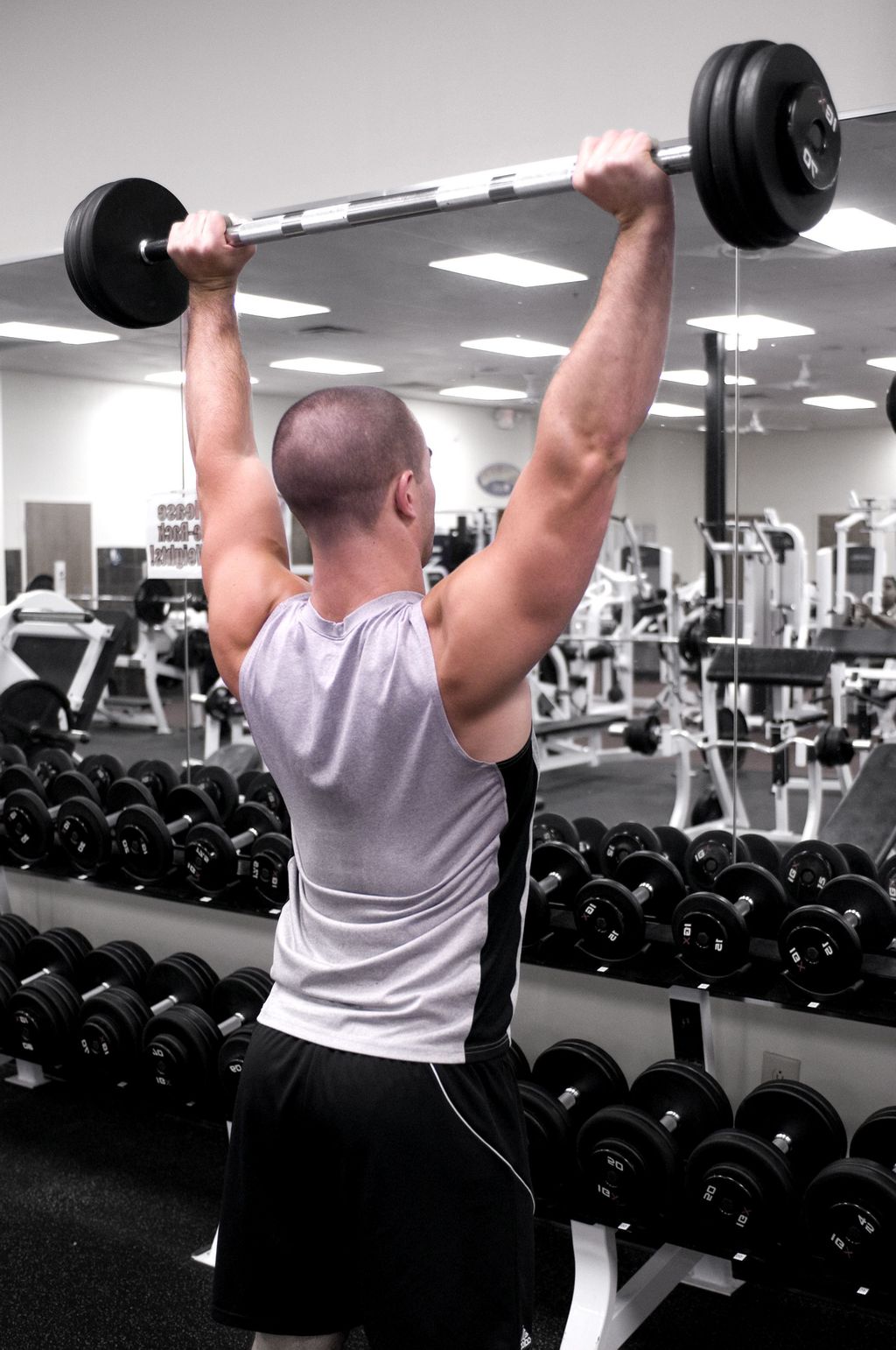
9. **Overhead Press**Maintaining robust upper body strength and shoulder mobility is a non-negotiable priority as men progress past their 50s, and the overhead press stands as a cornerstone exercise for achieving this vital goal. Tyler Read profoundly stresses its critical importance, stating directly that “Overhead pressing is a must for maintaining upper body strength and mobility.” This powerful compound movement directly translates into significantly improved functional capacity for countless daily activities that demand reaching upwards, from the seemingly simple act of retrieving tools from a high shelf in the garage to the more strenuous effort of screwing in a lightbulb, ensuring you retain independence and effortless ease of movement in your everyday life.
The overhead press offers remarkable versatility in equipment choices, empowering you to select what best fits your comfort level, access to gym equipment, and training preferences. You can effectively and safely utilize barbells, dumbbells, or kettlebells to perform this potent exercise, each providing a slightly different kinetic chain and challenge. Regardless of your chosen implement, the core benefit of building immense strength in your deltoids, triceps, and the stabilizing muscles of your upper back remains consistent, providing comprehensive upper body development that is absolutely essential for combating age-related muscle decline and maintaining powerful pushing capabilities.
Crucially, maintaining impeccable proper form during overhead presses is paramount not only to maximize the muscular benefits but, more importantly, to prevent potential injuries, especially to the delicate shoulder joint. Read provides a critical directive for safe and effective execution: “When pressing, do not allow your shoulders to shrug, and always press the weight to full lockout.” This precise cue ensures that the lifting force is generated primarily by your shoulder and arm muscles, rather than relying on compensatory shrugging of the traps, which can lead to discomfort or injury. Achieving full lockout at the top of the movement signifies complete muscular engagement and optimal joint stability, diligently building resilient and strong shoulders that will serve you well for many years to come.
Read more about: Navigating the AI Frontier: A Critical Guide to the Best Chatbots for Boosting Your Daily Productivity in 2025
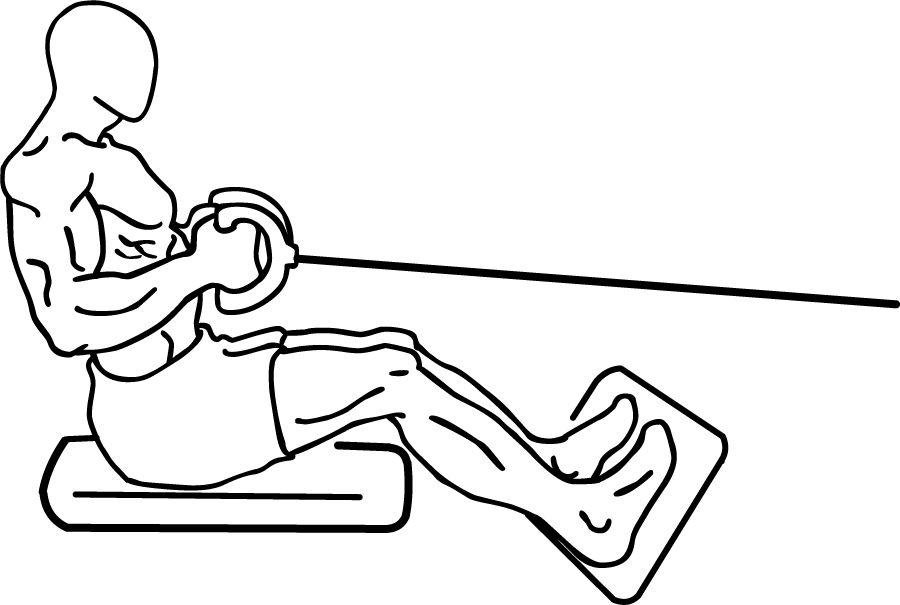
10. **Rows**Incorporating a variety of rowing exercises into your fitness routine is an absolute game-changer for men over 50, providing essential strength to the often-neglected muscles of the upper back and biceps. Tyler Read cogently highlights the immense importance of “movements that involve horizontal pulling,” explaining that these specific exercises dynamically target the major muscle groups nestled within your upper back and biceps. In a modern world often overwhelmingly dominated by pushing movements, maintaining a truly balanced approach with robust pulling exercises is critically important for cultivating excellent posture, fostering optimal shoulder health, and developing overall functional strength that supports an active lifestyle.
There is a fantastic array of effective rowing variations that can be seamlessly integrated into your workouts to keep them perpetually fresh, challenging, and highly effective. Read expresses a clear preference for the bent-over single-arm dumbbell row, a superb choice that facilitates unilateral training, which is vital for addressing and correcting any potential strength imbalances that might exist between your left and right sides. He also notes the equivalent effectiveness of performing the same lift with a kettlebell, or for those seeking a more comprehensive, dual-sided approach, bent-over barbell rows can be powerfully employed to engage both sides simultaneously. This inherent flexibility in choice empowers you to select the best method for diligently building a strong, resilient, and aesthetically pleasing upper back.
Crucially, maintaining impeccable proper form during all rowing exercises is non-negotiable to ensure you maximize the intended muscular engagement and, equally importantly, protect your delicate joints. Read emphasizes two key pointers for optimal execution: “Regardless of your rowing exercise choice, avoid letting your shoulders shrug, and focus on ‘squeezing’ your shoulder blades together as you finish the row.” Actively avoiding shrugging your shoulders during the pull ensures that the tension remains precisely on your target back muscles, preventing the traps from taking over. Meanwhile, the conscious, active squeeze of your shoulder blades at the peak of the movement truly isolates and powerfully strengthens the muscles responsible for a robust, powerful, and healthy upper back, transforming a simple pull into a highly effective strength-building endeavor.
Read more about: Beyond the Script: 12 Iconic Moments Where Genuine Joy, Genius Improv, and Happy Accidents Made Movie History
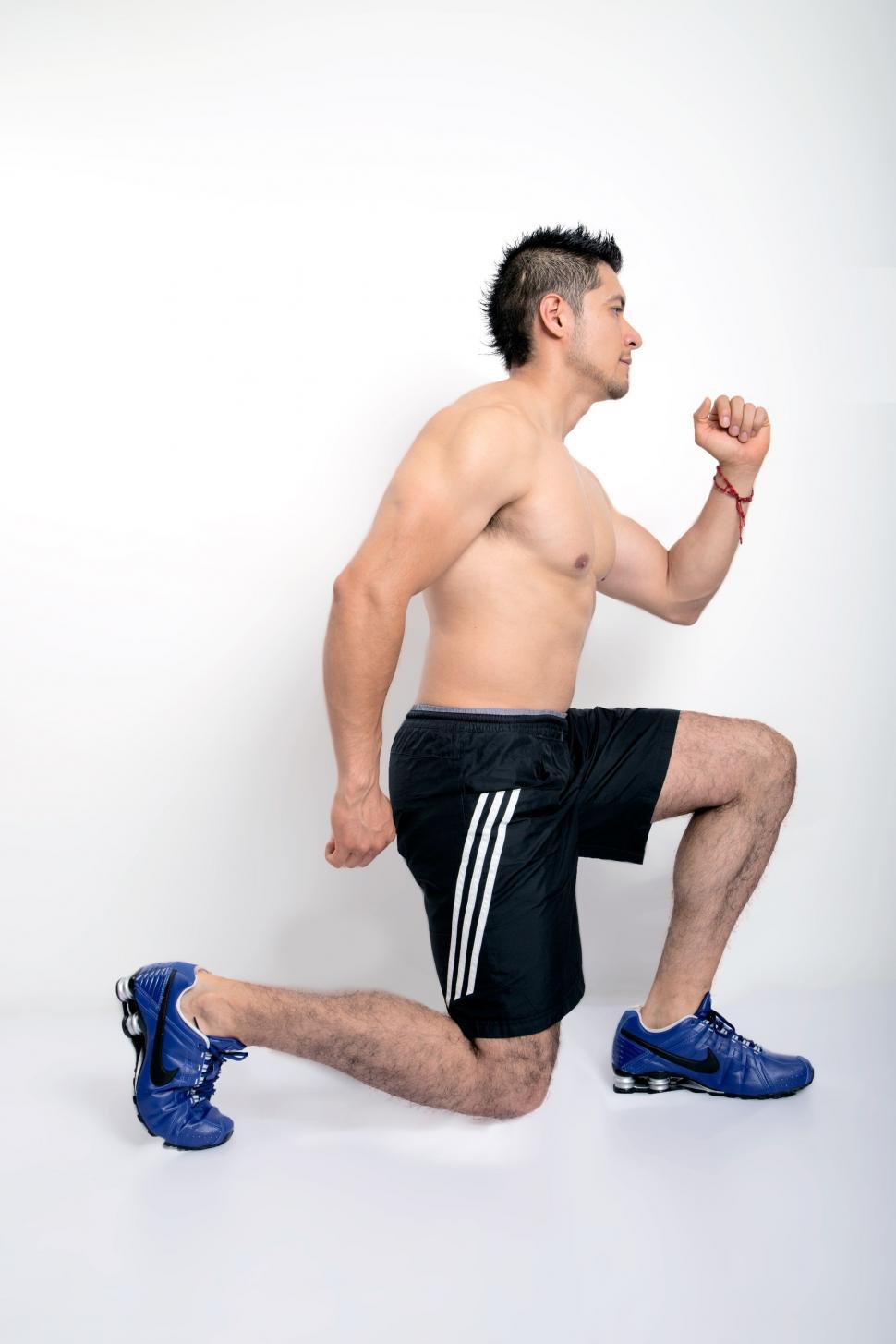
11. **Lunges**Lunges stand as an exceptional and profoundly functional exercise for the lower body, proving indispensable for men over 50 who are committed to maintaining peak mobility, sharp balance, and enduring athleticism. Tyler Read enthusiastically praises them as “an excellent functional exercise for your lower body,” specifically emphasizing how they adeptly and naturally mimic the standard human gait—the fundamental way we walk, run, and navigate our environment. This makes lunges incredibly practical and directly applicable for improving real-world movement patterns, significantly enhancing your balance, coordination, and overall athleticism, all while directly building powerful strength and lean muscle mass in your legs.
The inherent versatility of lunges allows for a wide spectrum of equipment choices, enabling you to progressively increase the challenge and load as your strength and confidence continue to blossom. Read specifically mentions his strong preference for dumbbell lunges, with the dumbbells held comfortably and securely at your sides, providing a balanced and effective resistance. However, he also highlights the proven effectiveness of kettlebell lunges, or for those robust individuals seeking a significantly heavier load and a different feel, racking a barbell across your upper back for barbell lunges. This comprehensive array of options means you can continuously progress and adeptly adapt the exercise to your evolving fitness level, diligently ensuring your lower body remains powerful, agile, and remarkably resilient.
To perform a lunge with optimal form and safety, initiate the movement by taking a deliberate and deep step forward with one leg. As you step, carefully and with control lower your back knee towards the ground while simultaneously bending your front leg. It is paramount to ensure your front knee tracks precisely in line with your toes, never caving inward, to protect your joints. Once you’ve reached the bottom position, powerfully push through the floor with your front heel to return to the starting position. Read clarifies that you can either step back to your original stance if you are performing lunges in place, or for a more dynamic and continuous approach, immediately take your next step forward with the opposite leg if you are executing walking lunges. This unwavering focus on controlled, precise movement builds incredible single-leg strength, stability, and functional power.
Read more about: 13 Unexpected Transformations: How to Fix Common Car Photography Mistakes for Jaw-Dropping Results

12. **Standing Rotations**As men mature, incorporating specific core exercises that purposefully focus on rotation becomes increasingly pivotal for maintaining impeccable spinal health and fostering overall functional movement, which is essential for an active lifestyle. Tyler Read highly recommends “incorporating some form of rotational core exercise” to ensure your core remains robustly strong and your spine stays remarkably healthy as you progress through the years. These dynamic movements are absolutely crucial for a myriad of activities that involve twisting, turning, or reaching across the body, ranging from the intricate swings in golf to the simple act of reaching for something in the backseat of your car, guaranteeing your core can support these actions without experiencing undue strain or discomfort.
There are numerous highly effective options for seamlessly integrating rotational core work into your fitness regimen, regardless of your access to specialized gym equipment. Read suggests standing cable rotations if a cable machine is readily available, as they offer a consistent and controlled resistance throughout the entire range of motion. For those training at home or with more basic equipment, Russian twists, medicine ball twists, or resistance band rotations are also prominently highlighted as excellent and accessible alternatives. This wide variety ensures you can always discover a suitable and engaging method to dynamically target your obliques and other deep core stabilizers, ensuring comprehensive core development.
When performing any twist variation, meticulous attention to proper form is the absolute key to both protecting your delicate spine and maximizing the exercise’s intended muscular benefits. Read provides a crucial, non-negotiable directive for safe and effective execution: “do not round your spine when rotating.” Instead, he emphatically instructs you to “Begin in a neutral spine position, and rotate through your hips and torso to perform each rotation.” This precise emphasis on rotating from the foundational power of your hips and torso, rather than initiating the movement from the lumbar spine, ensures that the exercise effectively and safely engages your core muscles while diligently safeguarding spinal integrity. Always remember to repeat the exercise on both sides to achieve balanced core strength, symmetrical mobility, and lasting resilience.
**The Journey to Lasting Vitality**
Read more about: Navigating Hyundai Ownership: A Comprehensive Guide to Maintenance, Models, and Premier Dealership Services for Informed Consumers
Embarking on a tailored fitness journey after 50 is not merely about preserving what you currently possess; it’s a profound commitment to actively building a stronger, more resilient, and profoundly capable version of yourself. As we’ve meticulously explored these twelve essential exercises, from the foundational strength of the Flat Back Bridge to the dynamic and empowering movements of Standing Rotations, it becomes abundantly clear that age is not a prohibitive limitation, but rather a compelling invitation to train smarter, live fuller, and thrive with renewed purpose. These thoughtfully selected movements, championed by esteemed experts like Nico Gonzalez and Tyler Read, collectively form a comprehensive and indispensable toolkit designed to dramatically enhance your strength, meticulously sharpen your mobility, and powerfully fortify your body against the inevitable, yet manageable, currents of aging. By wholeheartedly embracing these actionable strategies and consistently integrating them into your life, you’re not merely chasing fleeting fitness goals; you’re making a profound investment in enduring vitality, diligently ensuring that your body remains a remarkably capable and eager partner for all the rich adventures life still joyfully holds. Remember, consistent effort, smart, informed choices, and an attuned, listening ear to your body’s wisdom are the true, unwavering keys to unlocking a lifetime of robust health, profound well-being, and unwavering independence.

